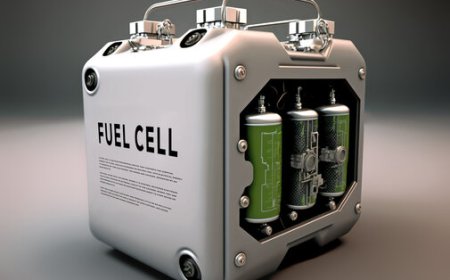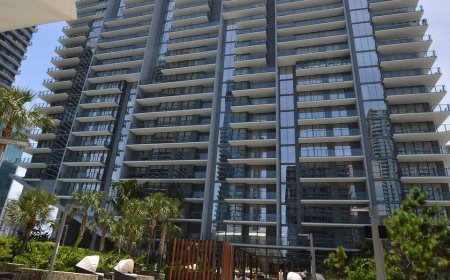Underground Shotcrete Services: Mining and Excavation Support Solutions

The underground construction industry relies heavily on specialized support systems to ensure worker safety and structural integrity in challenging subterranean environments. Among these critical technologies, shotcrete application stands as one of the most versatile and effective solutions for reinforcing excavated surfaces, stabilizing rock formations, and creating durable infrastructure in mining operations and tunnel construction projects.
Understanding the complexities of underground shotcrete applications requires examining both the technical requirements and practical challenges that define this specialized field. From deep mining shafts to urban subway systems, these services provide essential structural support that enables safe and efficient underground operations while meeting stringent safety standards and environmental regulations.
The Science Behind Underground Shotcrete Applications
Shotcrete technology involves the pneumatic application of concrete mixtures at high velocity onto surfaces, creating strong, durable bonds with existing rock or soil formations. In underground environments, this process becomes particularly complex due to factors including limited access, varying ground conditions, and the need for immediate structural support during excavation activities.
The two primary shotcrete methodswet mix and dry mixeach offer distinct advantages in underground applications. Wet mix shotcrete provides superior quality control and reduced dust generation, making it ideal for confined spaces where air quality is paramount. The pre-mixed material ensures consistent strength characteristics and reduced rebound, maximizing material efficiency in cost-sensitive mining operations.
Dry mix shotcrete, conversely, offers greater flexibility in remote locations where water access is limited or where longer transport distances are required. This method allows for precise control of water content at the nozzle, enabling operators to adjust consistency based on specific application requirements and environmental conditions encountered during excavation.
The chemical composition of underground shotcrete requires careful consideration of accelerating agents, which enable rapid setting essential for immediate support in unstable ground conditions. Modern accelerator systems provide controlled setting times while maintaining long-term strength development, crucial for permanent structural applications in mining infrastructure.
Mining Industry Applications and Challenges
Mining operations present unique challenges that demand specialized shotcrete solutions tailored to extreme environmental conditions and rigorous safety requirements. Underground mines operate in environments characterized by high humidity, temperature variations, chemical exposure, and constant vibration from heavy machinery and blasting activities.
Primary support systems in mining operations rely heavily on shotcrete applications to provide immediate stabilization of newly excavated surfaces. This initial support prevents rock falls and ground movement while allowing time for secondary support installation, such as rock bolts or steel sets. The speed of application becomes critical in maintaining production schedules while ensuring worker safety.
Shaft construction represents one of the most demanding applications for underground shotcrete services. Deep vertical excavations require specialized equipment and techniques to apply shotcrete effectively while managing issues such as material segregation, overspray control, and access limitations. Modern robotic shotcrete systems have revolutionized shaft construction by providing consistent application quality and improved safety through reduced human exposure to hazardous conditions.
Drift and tunnel development in mining operations requires shotcrete systems capable of conforming to irregular surfaces while providing uniform thickness and strength characteristics. Advanced fiber reinforcement technologies enhance the performance of shotcrete in these applications, providing improved crack resistance and post-crack load-bearing capacity essential for long-term structural integrity.
Excavation Support Systems and Methodologies
Large-scale excavation projects, including subway systems, underground parking structures, and utility tunnels, require sophisticated shotcrete support systems that integrate with overall construction methodologies. The New Austrian Tunneling Method (NATM) and Sequential Excavation Method (SEM) both rely heavily on shotcrete applications as primary support elements.
Ground conditions significantly influence shotcrete application strategies, with soft ground requiring different approaches than hard rock excavations. Soft ground applications often incorporate drainage systems and waterproofing membranes integrated with shotcrete layers to manage groundwater infiltration while maintaining structural integrity.
Rock quality assessment becomes crucial in determining appropriate shotcrete thickness and reinforcement requirements. Detailed geological surveys inform shotcrete specifications, ensuring adequate support capacity while optimizing material usage and construction efficiency. Advanced monitoring systems track ground movement and stress distribution, enabling real-time adjustments to shotcrete applications.
Sequential excavation techniques require precise timing of shotcrete applications to maintain excavation stability while allowing continued progress. This coordination demands experienced crews capable of adapting to changing ground conditions and unexpected challenges that commonly arise in underground construction.
Safety Protocols and Regulatory Compliance
Underground shotcrete operations must comply with comprehensive safety regulations designed to protect workers from unique hazards associated with confined space construction. Ventilation systems become critical for managing dust and chemical exposure from shotcrete materials and accelerator systems, requiring specialized engineering to maintain air quality standards.
Personal protective equipment (PPE) requirements for underground shotcrete crews extend beyond standard construction safety gear to include respiratory protection, chemical-resistant clothing, and specialized eye protection designed for high-velocity material application in confined spaces. Regular safety training ensures crews understand proper procedures for equipment operation, emergency response, and hazard recognition.
Emergency response protocols for underground shotcrete operations must address potential scenarios including equipment failure, material spillage, and medical emergencies in confined spaces. Specialized rescue equipment and trained personnel must be readily available, with clear communication systems enabling rapid response to any emergency situation.
Environmental compliance in underground shotcrete applications involves managing dust generation, chemical runoff, and noise levels while minimizing impact on surrounding communities and ecosystems. Modern shotcrete systems incorporate advanced dust suppression technologies and environmentally friendly accelerator systems that reduce environmental impact without compromising performance.
Quality Control and Testing Procedures
Underground shotcrete applications require rigorous quality control measures to ensure consistent performance under demanding conditions. Core sampling and strength testing provide verification of shotcrete properties, while visual inspection identifies potential defects such as shadowing, segregation, or inadequate bonding with substrate materials.
Advanced testing technologies, including ground-penetrating radar and ultrasonic testing, enable non-destructive evaluation of shotcrete thickness and density without disrupting ongoing construction activities. These methods provide real-time feedback on application quality, enabling immediate corrections when deviations from specifications are detected.
Long-term monitoring systems track shotcrete performance over time, providing valuable data for optimizing future applications and identifying potential maintenance requirements. Instrumentation systems measure ground movement, stress distribution, and structural response to loading conditions, ensuring continued structural integrity throughout the service life of underground installations.
Documentation requirements for underground shotcrete applications include detailed records of material properties, application conditions, and test results. This information supports quality assurance programs and provides essential data for future maintenance and modification activities.
Equipment and Technology Innovations
Modern underground shotcrete operations utilize sophisticated equipment designed specifically for confined space applications. Robotic shotcrete systems provide consistent application quality while reducing human exposure to hazardous conditions, particularly valuable in areas with poor ventilation or extreme environmental conditions.
Automated mixing and pumping systems ensure consistent material properties while reducing labor requirements and improving safety. Advanced control systems monitor material flow, pressure, and application parameters in real-time, enabling operators to maintain optimal performance throughout the application process.
Specialized nozzle designs optimize material placement while minimizing rebound and overspray, crucial for maintaining air quality and material efficiency in confined spaces. Modern nozzle systems incorporate advanced spray patterns and flow control mechanisms that adapt to varying application angles and surface conditions.
Future Trends and Technological Developments
The underground shotcrete industry continues evolving with advances in materials science, automation technology, and monitoring systems. High-performance shotcrete formulations incorporate advanced admixtures and reinforcement systems that provide superior durability and performance under extreme conditions.
Digitalization of shotcrete operations through advanced sensors and data analytics enables predictive maintenance, optimized material usage, and improved quality control. These technologies provide real-time insights into application performance while supporting continuous improvement initiatives.
Sustainable shotcrete solutions incorporating recycled materials and reduced carbon footprint are becoming increasingly important as environmental regulations become more stringent. Advanced admixture systems enable the use of alternative cementing materials while maintaining performance requirements essential for underground applications.
Underground shotcrete services continue playing a vital role in enabling safe and efficient underground construction operations. The combination of proven application techniques, advanced materials, and innovative equipment ensures that these services will remain essential for future mining and excavation projects as the industry continues expanding into increasingly challenging underground environments.


























